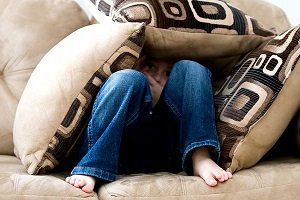How to Get Rid of Dysthymia
TweetDysthymia is a more mild depressive illness that lasts intermittently for 2 years or more and is characterized by tiredness and low mood, lack of pleasure, low self-esteem, and a feeling of discouragement. The mood relapses and remits, with several weeks of feeling well, soon followed by longer periods of being unwell. It can be punctuated by depressive episodes of more severity; so-called 'double depression'.
The lifetime risk for the dysthymia is about 3% (Kessler et al. 1994). Because of the chronic nature of the disorder, the 6-month prevalence is only a little less. Rates of dysthymia are increased in women and the divorced. There is less epidemiological information about recurrent brief depression but in the Zurich prospective study the 6-month prevalence for recurrent brief depression was about 5%, very similar to the rate found for major depression (Angst 1992).
What is Dysthymic Disorder?
A less severe type of depression, involves long-term, chronic symptoms that do not disable, but keep one from functioning well or from feeling good. Many people with dysthymic disorder also experience major depressive episodes at some time in their lives.
It does not tend to debilitate the sufferer to the point where they cannot perform everyday routines, although the disorder is severe enough to cause distress and interference with important life role responsibilities.
"People with mild depression can still function, but they're sad sacks," says San Francisco psychiatrist Michael Freeman, M.D. "They consider themselves losers." Dysthymia may or may not have a triggering life event. Quite often, there is nothing to blame it on - no loss or life change. This can be confusing for both the person affected, and their loved ones. But just as you can catch a cold seemingly out of nowhere, you can also slip into dysthymia for no apparent reason.
Some facts and statistics on Dysthymia?
Symptoms of dysthymic disorder (chronic, mild depression) must persist for at least 2 years in adults (1 year in children) to meet criteria for the diagnosis. It affects approximately 5.4 percent of the U.S. population age 18 and older during their lifetime. This figure translates to about 10.9 million American adults.
About 40 percent of adults with dysthymic disorder also meet criteria for major depressive disorder or bipolar disorder in a given year.
It often begins in childhood, adolescence, or early adulthood.
What are the symptoms of dysthymic disorder?
Symptom may vary from person to person. If an individual faces any of the following signs of depression for more than 2-3 weeks, he or she may be depressed.
- Low energy,
- sleep disturbances,
- appetite disturbances,
- Irritable or angered easily,
- low self-esteem are usually part of the clinical picture as well.
- Inability to concentrate,
- Feelings of worthlessness,
- sad mood
It causes changes in thinking, feelings, behavior and physical well-being.
It is characterized by at least 2 yrs of depressed mood for more days than not, accompanied by additional depressive symptoms that do not meet criteria for a major depressive episode.
Dysthymia is a condition that tends to develop early in a person's life, but most people delay approximately ten years before every seeking treatment.
Dysthymia can affect men or women; but is more common in women. It can begin in childhood or adolescence. As with many illnesses, dysthymia doesn't discriminate.
It is very important that children with symptoms of dysthymia receive an evaluation from a mental health professional or physician.
Dysthymic Disorder - Bottom line
A dysthymic disorder is characterized not by episodes of illness but by the steady presence of symptoms. Because dysthymia does not incapacitate like major depression, as a rule, dysthymic people do well in psychotherapy (medication can also be used).
As always, it is best to discuss your treatment with your doctor or other health care professional. There are also some lifestyle changes that may help.
Facts and Tips about Dysthymic Disorder
- Dysthymic disorder is a chronic situation illness or depression, but with less severity than a major depression.
- Usually Symptom for dysthymic disorder is an approximately daily depressed mood for at least two years, but without the essential criteria for a major depression and low energy, sleep or appetite disturbances.
- Dysthymic disorder happens in about 25% to 50% of people who have sleep abnormalities that comprise reduced rapid eye movement (REM) sleep and impaired sleep continuity.
- Causes of dysthymia are complex and not yet completely understood. Sleep abnormalities, hormones, neurotransmitters, upbringing, heredity, and stressors, stress all have been implicated as causes of this disorder.
- Risk factor in this disorder such as having biological relatives with depression, having biological relatives with dysthymia, being female, stressful life events, having a chronic medical condition.
- For treating this disorder used some medication which include fluoxetine (Prozac), sertraline (Zoloft), paroxetine (Paxil), and citalopram (Celexa).
Also find out: What are the treatments of dysthymic disorder - also undertreatment ?

Coming from a family of five, parents/brother, all deceased, my mother suffered from high anxiety, it was called worry while she was alive, my father, a genetic carrier for schizophrenia...he was diagnosed with bi-polar disorder, suffered from endogenous depression and was psychotic with delusions. My sister has dysythmic depression, as well as double depression, PTSD, multiple phobias, has experienced severe clinical depression, has OCD, suffers severe anxiety, panic attacks and myself, I've had clinical depression, suffer from social anxiety disorder, OCD, possible PTSS, multiple phobias and I'm having a very difficult time knowing how to be a sibling. I accept my emotional and mental disorders and illnesses, whereas she can't and feels constrained by them as well as having fibro which she also hates having. To her, the words are labels, just like my brother called them...labels rather than acknowledge his illnesses as...illnesses.
Our mother died and I know for a fact that my brother, sister and I, have and still, are, experiencing the fallout of her death as did my father. He went into an emotional, downward spiral as well as after my brother died. - Carol M

Sometimes crying or laughing
are the only options left,
and laughing feels better right now.

Current Issue
 Self Help Leaflets Take the help of our self help leaflets or booklets. |
 The DG Magazine All about living with depression |


















